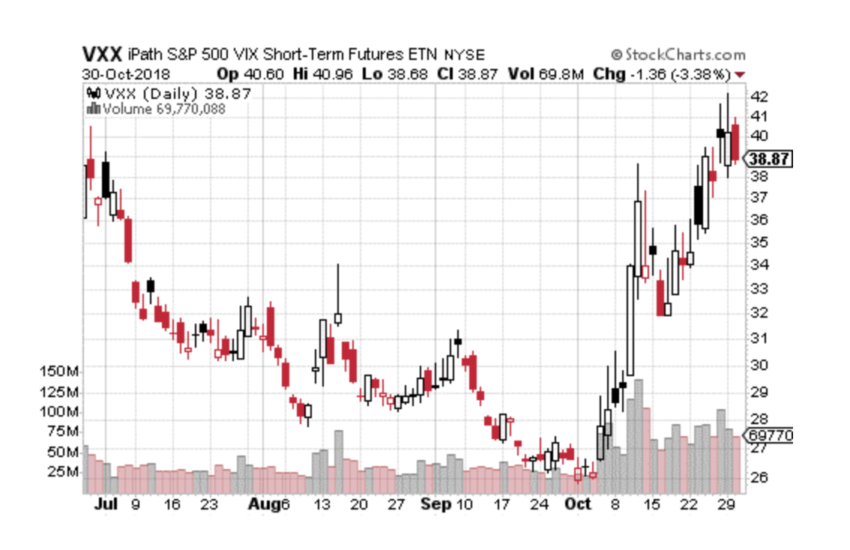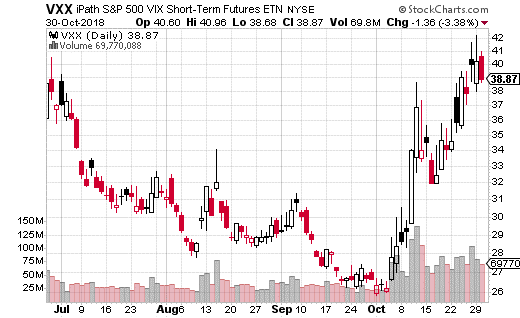
Source: Shutterstock
It took pot stocks just a few weeks in August and September to become the hottest investments on Wall Street. Likewise, it has taken just a few weeks in October to make them some of the coldest investments.
In August and September, pot stocks went crazy. Almost all of them rallied by more than 50%. Some doubled. Some tripled. One rose by more 1,000%. The fundamental backdrop was that pot stocks were gearing up for their biggest catalyst yet — the legalization of cannabis in Canada on Oct. 17. Everyone wanted exposure to weed prior to that catalyst.
But, as was largely expected, the legalization of weed throughout Canada became a “sell the news” event. It has been a bumpy roll-out characterized by supply shortages and consumers turning to the black market. Pot stocks, which were priced for a perfect roll out, have dropped into bear market territory as the roll out has been far from perfect.
Indeed, most pot stocks are well into bear market territory now. As of this writing, most widely followed pot stocks are down more than 30% from recent highs.
But, the long-term growth narrative remains positive. Cannabis is becoming increasingly legal on a worldwide basis, and consumer trends indicate that once legal, recreational pot could be as widely consumed as alcoholic beverages. Throw in the medical applications of cannabis, and you are talking about a market that promises to be huge.
So, is it time to buy the dip in pot stocks?
Maybe. Because the momentum is gone and the focus is back on fundamentals, you should only buy into pot stocks when the valuation makes sense. For some of these names, the valuation is starting to make sense. For others, not so much.
With that in mind, here’s a list of three pot stocks investors should be watching during this selloff.
Canopy Growth (CGC)

Time and time again, I’ve claimed the best investment in the cannabis sector is Canopy Growth(NYSE:CGC).
Due to its early market leadership, distinguished track record, biggest production capacity, widest portfolio of brands and billion dollar partnership with alcoholic beverage giant Constellation Brands (NYSE:STZ), CGC stock is head-and-shoulders above other pot stocks when it comes to investment attractiveness. But, that didn’t make CGC stock immune to broad cannabis sector weakness. As I warned in mid-October, all pot stocks — CGC included — are due for weakness in the near term.
Fast forward a week. CGC stock has dropped more than 30% since then. Time to buy the dip?
I think so. There may be more weakness ahead as the Canadian cannabis roll out continues to be bumpy. But, CGC stock is now nearing levels it was at just after the STZ investment. Those levels seem fundamentally supported by STZ’s $4 billion investment, and as such, I don’t see the market sending CGC stock below the low $30’s any time soon.
Meanwhile, reasonably optimistic growth assumptions point to healthy long-term upside for CGC stock.
As such, now looks like a good time to start gradually buying the dip in CGC stock.
Tilray (TLRY)

Just as I’ve reiterated time and time again that Canopy Growth was the best investment in the cannabis sector, I have also warned time and time again that Tilray (NSDSAQ:TLRY) is the most overvalued.
Despite having lower sales than CGC, a less distinguished track record, smaller production capacity, a more narrow portfolio of brands and no billion dollar partnership, TLRY stock has been rewarded in the stock market with a bigger valuation than CGC stock. This discrepancy doesn’t make sense, and it’s why TLRY stock fell the hardest during this recent correction. Over the past few weeks, TLRY stock is down more than 35%. It’s also more than 50% off September highs.
Unfortunately, this valuation disconnect still hasn’t fixed itself. As of this writing, Canopy has a market cap of $7.5 billion. Tilray has a market cap of over $9 billion. That relative valuation disconnect shouldn’t exist, and so long as it does, Tilray stock will struggle.
As such, I don’t think this recent dip in TLRY is worth buying. The company has healthy long-term growth drivers. But, at a $9 billion-plus valuation with smaller market share than peers, all that growth is already priced in, and then some. With momentum now favoring the bears, investors can afford to wait for TLRY stock to come down further before speculating on long-term upside.
Cronos (CRON)

Next to Canopy, my second-favorite pot stock is Cronos (NASDAQ:CRON). But, even though I’ve favored this name over peers, I also warned in mid-October that buying then was dangerous.
Since then, CRON stock has come down about 30% to levels not seen since shortly after the big Constellation Brands investment into Canopy. That is a big wipe-out in a short amount of time. And, it has left CRON stock undervalued.
Cronos has a market cap of just $1.3 billion, versus $5 billion-plus market caps at Tilray and Canopy. A big reason for the lower valuation is lower production capacity. CRON has planned production capacity of roughly 1.2 million square feet, versus 3.8 million square feet for TLRY and 5.6 million for CGC.
But, each square foot of Cronos production capacity is being undervalued relative to Tilray and Canopy’s. The market cap per square foot of planned production is about $2,350 at TLRY and $1,350 at CGC. At CRON, it is just $1,100.
That doesn’t make much sense, especially considering Cronos is projecting yield of 110,000 kilograms of cannabis on those 1.2 million square feet. That equates to almost 100 grams of weed per square foot, which is a very attractive yield.
As such, once pot stocks stabilize from recent volatility, CRON stock could be a buy. I still think CGC stock is the best in class, but CRON stock offers relative valuation upside that is quite attractive.
Pay Your Bills for LIFE with These Dividend Stocks
Get your hands on my most comprehensive, step-by-step dividend plan yet. In just a few minutes, you will have a 36-month road map that could generate $4,804 (or more!) per month for life. It's the perfect supplement to Social Security and works even if the stock market tanks. Over 6,500 retirement investors have already followed the recommendations I've laid out.
Click here for complete details to start your plan today.
Source: Investor place



